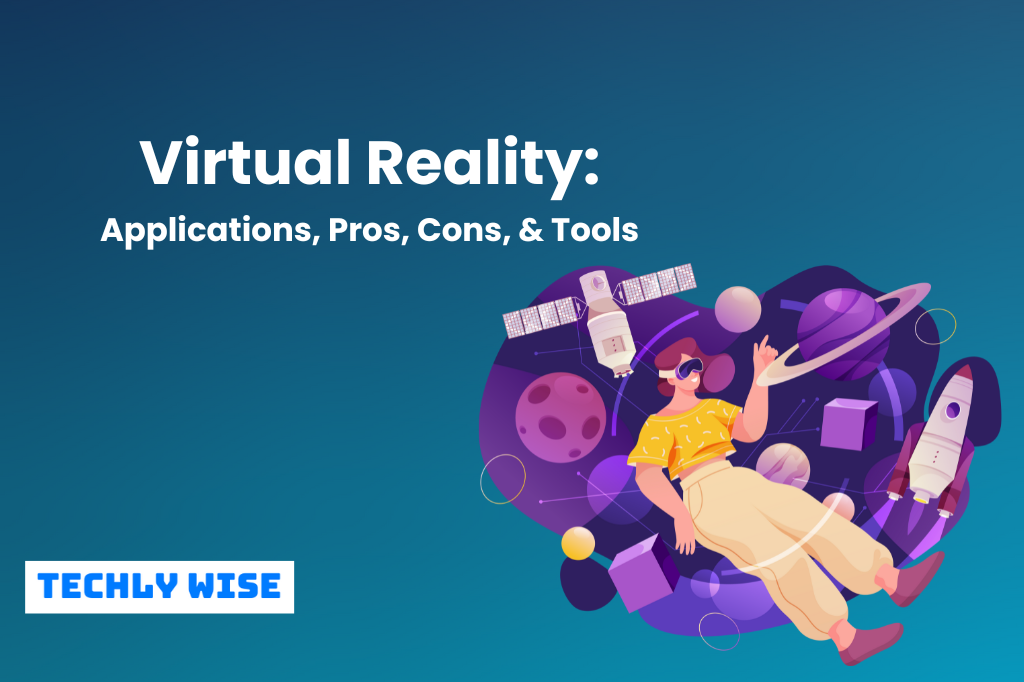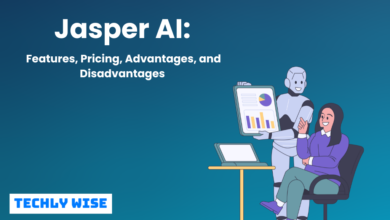
Virtual reality (VR) is a man-made environment that is produced using software and presented to the user in a way that the user believes and perceives as real. Virtual worlds simulate various senses, including sight, touch, hearing, and smell. You can enter a virtual world by holding up Google Cardboard and putting your smartphone’s screen in front of your face. The hardware’s purpose is to build a virtual world without the limitations that come with TV or computer screens.
Applications Virtual Reality:
Following are a few potential uses for virtual reality in the future:
- Training and Education
VR is being used in training to enable experts to practice in a virtual setting where they can hone their abilities without failing the procedure.
- Store
IKEA, Lowe’s, and Wayfair have created systems that let customers view their products in virtual reality, giving them a better idea of how the item will fit in their home or allowing them to take a closer look at the item from the comfort of their own home.
- Urban planning
Virtual reality can now be used for planning, transportation, and urban renewal initiatives.
Benefits of Virtual Reality
Virtual reality is a popular medium for entertainment and education due to a variety of benefits. Here are just a few of virtual reality’s many benefits.
- Medical treatment.
- Experiential immersion.
- Escapism.
- Collaboration and communication.
- Social networking, gaming, and entertainment are all included in education and training.
Disadvantages of Virtual Reality
- Health dangers.
- Virtual reality eye strain.
- Potential for addiction.
- Injury to the body while playing.
- Headache.
- Nausea.
- Seizures.
Tools for Virtual Reality
Unity
The most popular usage of Unity is for the creation of video games, but it may also be employed to develop VR solutions for some different business sectors. For the engineering, media and engineering, entertainment, and construction industries, virtual reality solutions might be developed using Unity, for instance.
Features:
- A VR developer can access courses like “Getting Started with Unity” and others through Unity’s learning portal.
- You can get your project off the ground and finished more quickly thanks to the ever-expanding selection of tools and materials available for both free and money.
- You may view the game’s vast documentation and get the help you need at the Unity support & services website.
Cost: The sales staff must provide you with a quote.
3ds Max
You can use Autodesk’s 3D modeling and rendering tool, 3ds Max to create video games and visualize designs, among other things. This complex program has a wide range of features.
Features:
- You can use it to make 3D animations that look good.
- You have access to a variety of 3D rendering, user interface, workflow, pipeline, 3D animation, and other tools with 3ds Max.
- 3ds Max is a versatile and effective tool for creating 3D models of the highest quality.
- A range of instructional materials and documentation are available for 3ds Max.
Cost: Begins at $225 per month.
SketchUp Studio
A powerful 3D modeling tool for the construction and architecture sectors called SketchUp Studio may also be used to make apps for virtual reality. Some of the applications include commercial interior design, architecture, landscape architecture, 3D printing, residential construction, and urban planning.
Features:
- You can use its powerful desktop program, which has an easy-to-use user interface, to create your structure in 3D by downloading it.
- Both augmented reality and virtual reality apps can be made using this technology.
- SketchUp Studio must also create tools for a particular industry and enable the use of appealing visuals.
Cost: Begins at $199 per year.
Sumerian on Amazon
AWS uses a VR engine called Amazon Sumerian, and using it doesn’t require any experience with 3D graphics or VR programming. Sumerian is compatible with all widely used virtual reality systems, including the Oculus Rift, Oculus Go, HTC Vive Pro, HTC Vive, Lenovo Mirage, Google Daydream, and Android and iOS mobile devices.
Features:
- You can quickly create and incorporate 3D sceneries into brand-new or pre-existing websites with Babylon.js.
- You can instantly share your 3D sceneries with anybody, anywhere using AWS Amplify.
- Sumerian Hosts is open-source and available on GitHub for straightforward integration with your Babylon.js and Three.js apps.
Cost: Starting will cost you $0.06 per GB each month.
CryEngine
The popular 3D game developer CRYENGINE is a potent VR software development tool. With it, you can develop VR applications for popular VR systems like the Xbox One, PlayStation 4, Oculus Rift, and others.
Features:
- Your app might have top-notch graphics.
- Creating characters is simple.
- Creating a VR app or VR game is easy using CryEngine sandbox and other necessary tools.
- Built-in audio solutions are available.
- You can give your stakeholders an immersive experience by creating real-time visualization and interactivity using CRYENGINE.
Cost: The initial monthly cost is USD 9.90/EUR.
Unreal Engine 4 (UE4)
Unreal Engine 4 includes a comprehensive selection of virtual reality development tools. For various VR platforms, including Sony, Oculus, Google VR, Samsung Gear VR, iOS, Android, and more, you can create VR apps using UE4.
Features:
- It makes its C++ source code and Python scripts available, enabling any VR developers on your team to research and understand how to use the engine thoroughly.
- Blueprint, a visual scripting tool in UE4, enables you to create prototypes quickly.
- Adding animation, effects, music, a sequence, a simulation, and other features is straightforward.
- UE4 offers a flexible editor, real-time graphic rendering, and multiplayer architecture.
Cost: Beginning at $19 monthly.
Google VR Accessible to all
You may use Google’s rich VR development tools to create an immersive VR experience for your stakeholders. The Google VR developer portal is where you may find these resources. VR apps for a range of platforms, including Unreal, Unity, iOS, Android, and the web, may be made using these technologies.
Features:
- All VR platforms supported by the Google VR developer platform, including Unity, iOS, and Android have software development kits (SDKs) accessible to them.
- With this, it’s easy to make VR applications for the majority of VR systems, including Oculus, Google Cardboard, and others.
Cost: Depending on the model, Google Cardboard costs $20 to $30 while the Oculus Rift costs $599.
Blender
A free open-source 3D modeling program is called Blender. The Blender Foundation, a nonprofit organization devoted to the common good, is in charge of directing the development of Blender.
Features:
- You may construct your 3D pipeline using modeling, animation, rigging, simulation, composition, rendering, and motion tracking.
- You can edit videos and make virtual reality games with Blender.
- If you have a talented VR developer on your team, they might modify the program using Python scripting’s API. This makes it possible to create unique tools.
Cost: Free.
Maya
Virtual reality software development tool Maya from Autodesk. Maya can be used to create 3D animations, visual effects, and motion graphics.
Features:
- You can iterate more quickly thanks to Maya’s complex features, which frees you up to concentrate on creativity while still meeting deadlines.
- Use the dynamic animation tools in Maya to give realistic-looking models life.
- Produce top-notch work that encourages repeat business by giving characters and settings minor finishing touches.
Cost: Beginning at $225 per month.
Having Content
You can manage your content across numerous platforms with Content Full, a cloud-based content management system. Developers can offer material via the editing interface, enabling interactive content management, by utilizing their own programming language and template structure.
Features:
- A platform for extensive digital experiences is called Content Full.
- Through open APIs and an app framework, it enables teams to centralize information in one location, organize it for use across all digital channels, and connect to hundreds of other applications.
Cost: You can begin for nothing.
Autodesk AEC Collection
The AEC Collection offers a set of BIM and CAD tools, as well as a cloud-based shared data environment, to enable designers, engineers, and contractors to deliver projects from conception to completion.
Features:
- Design infrastructure and buildings with high performance and quality utilizing conceptual and detailed design tools.
- Improve projects by incorporating analysis, generative design, visualization, and simulation tools.
- Using technologies that improve constructability and project collaboration, we can increase field predictability.
Cost: Starts at $390.
REWO
REWO is an end-to-end plug-and-play video platform for Standard Operating Procedures and Work Instructions, according to the business, and it can convey information up to 12 times faster than traditional documentation techniques. Increased knowledge collection, visualization, and communication with everyone inside the company’s ecosystem are the company’s main objectives.
Features:
- By effectively documenting processes, REWO helps reduce dependency on training and experience.
- You may be able to reduce the cost of onboarding new employees by doing away with the requirement for a full-time training partner and accelerating the training process.
- By giving your personnel clear, interactive instructions to follow as they carry out their daily duties, you can lessen human error.
Cost: To get a quote, you must ask the sales team.
Read Extended Reality: Future, Advantages, Adoption Issue.
The ThreeKit
A 3D product configuration and visualization platform called ThreeKit provides businesses with the resources they need to create engaging product experiences.
Features:
- Threekit offers 3D configuration, augmented reality, lifelike virtual photography, and other customization options for materials, features, colors, and more.
- From a single location, access and manage all of your product assets.
Cost: The sales staff must provide you with a quote.
Kuula
Kuula is marketed as an easy and cost-effective way to create 360-degree virtual tours for real estate, construction, hospitality, design, and education by the same-named company in Santa Monica, California.
Features:
- The fastest and most effective 3D 360 Virtual Tour player on the internet is Kuula’s. The smallest component is flawless.
- Kuula makes it simple to reach your audience, wherever they are, whether you want to embed a tour on a website, include one in a real estate listing, or simply share a link via email.
Cost: You can begin for nothing.




